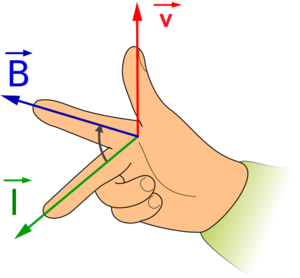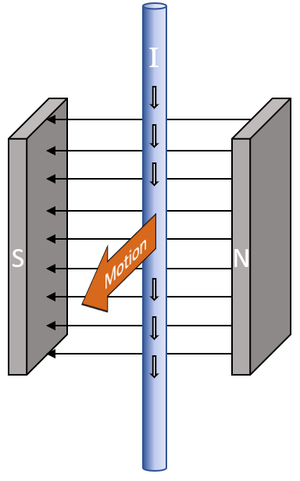Difference between revisions of "Generator Effect"
| Line 20: | Line 20: | ||
<math>\overrightarrow{I}</math>: Second finger [[Electrical Current|current]]. | <math>\overrightarrow{I}</math>: Second finger [[Electrical Current|current]]. | ||
| − | | style="height:20px; width:200px; text-align:center;" |This [[diagram]] shows that as the [[wire]] is moved through the [[Magnetic Field|magnetic field]] a [[Electrical | + | | style="height:20px; width:200px; text-align:center;" |This [[diagram]] shows that as the [[wire]] is moved through the [[Magnetic Field|magnetic field]] a [[Electrical Current|current]] can be '''generated'''. |
|} | |} | ||
Revision as of 10:21, 8 April 2019
Key Stage 4
Meaning
The generator effect is the current induced in a wire when it is in the region of a changing magnetic field.
About The Generator Effect
- When a wire is moved through a magnetic field at right angles to the field lines it causes a potential difference across the wire. If that wire is part of a circuit this will induce a current.
- The generator effect takes place whenever a wire is in a changing magnetic field. This change can be due to the relative motion of the wire and magnet or by the magnetic field changing over time.
- The generator effect is used in power stations to generate electricity.
- The direction of the current induced is shown by the 'right hand generator rule'.
- The generator effect is used in alternators and dynamos.
|
\(\overrightarrow{B}\): First finger field. \(\overrightarrow{v}\): The motion of the wire. \(\overrightarrow{I}\): Second finger current. |
This diagram shows that as the wire is moved through the magnetic field a current can be generated. |

